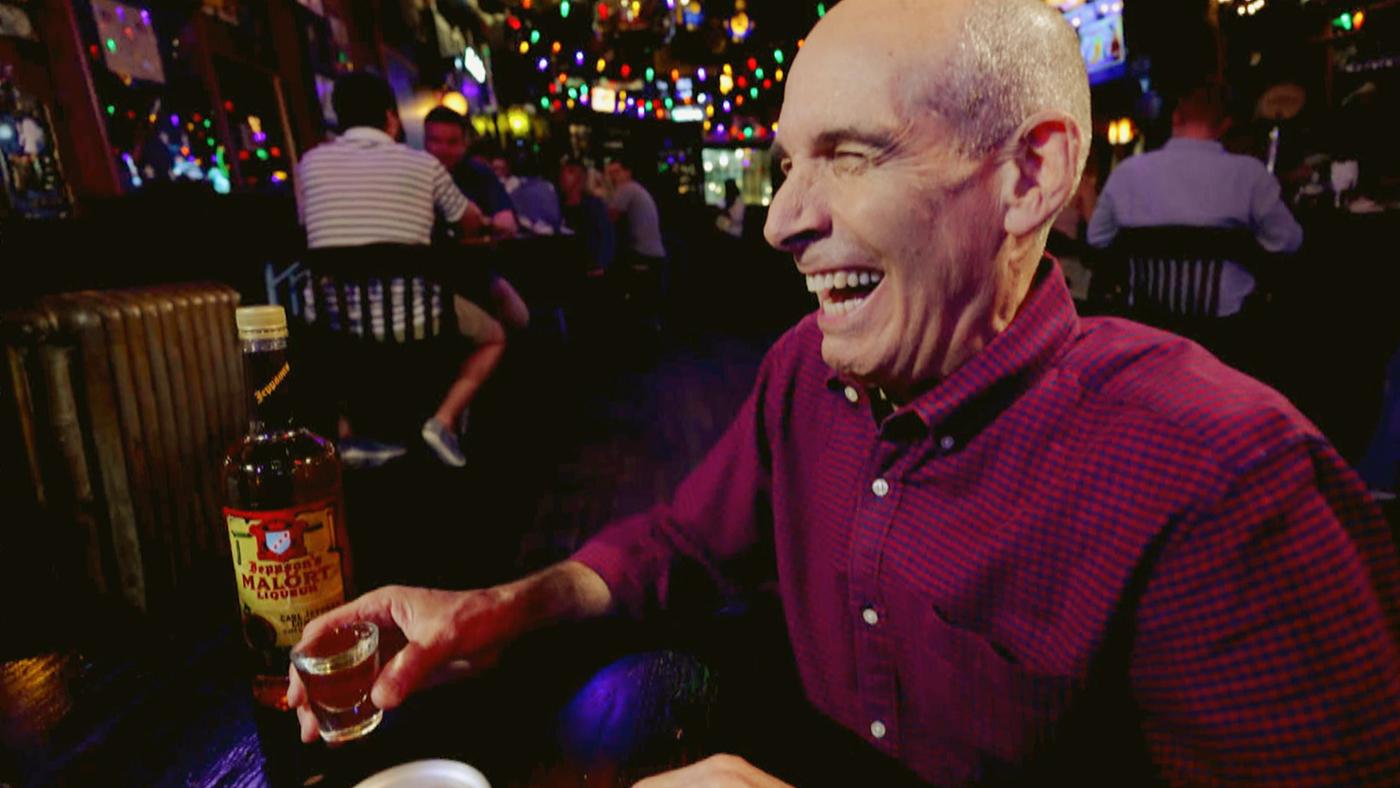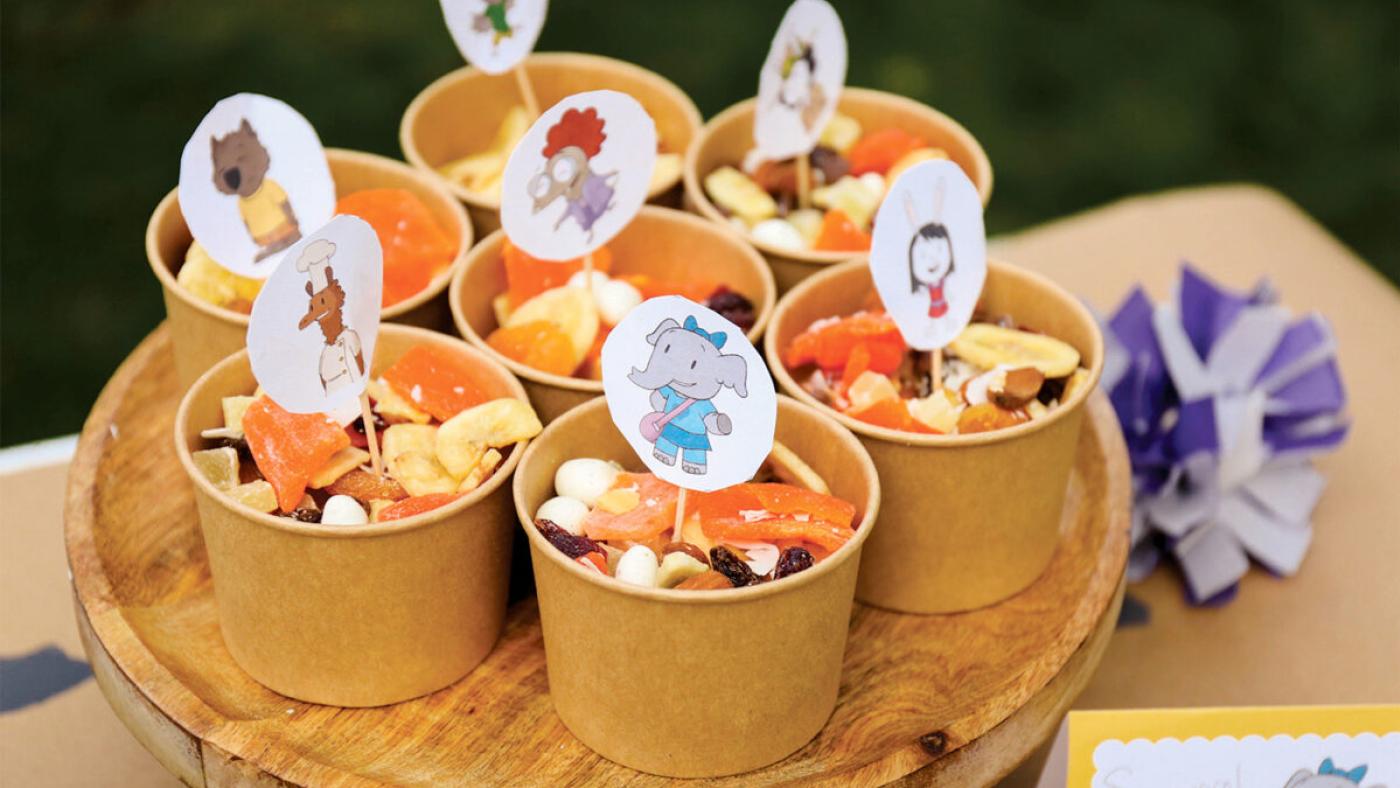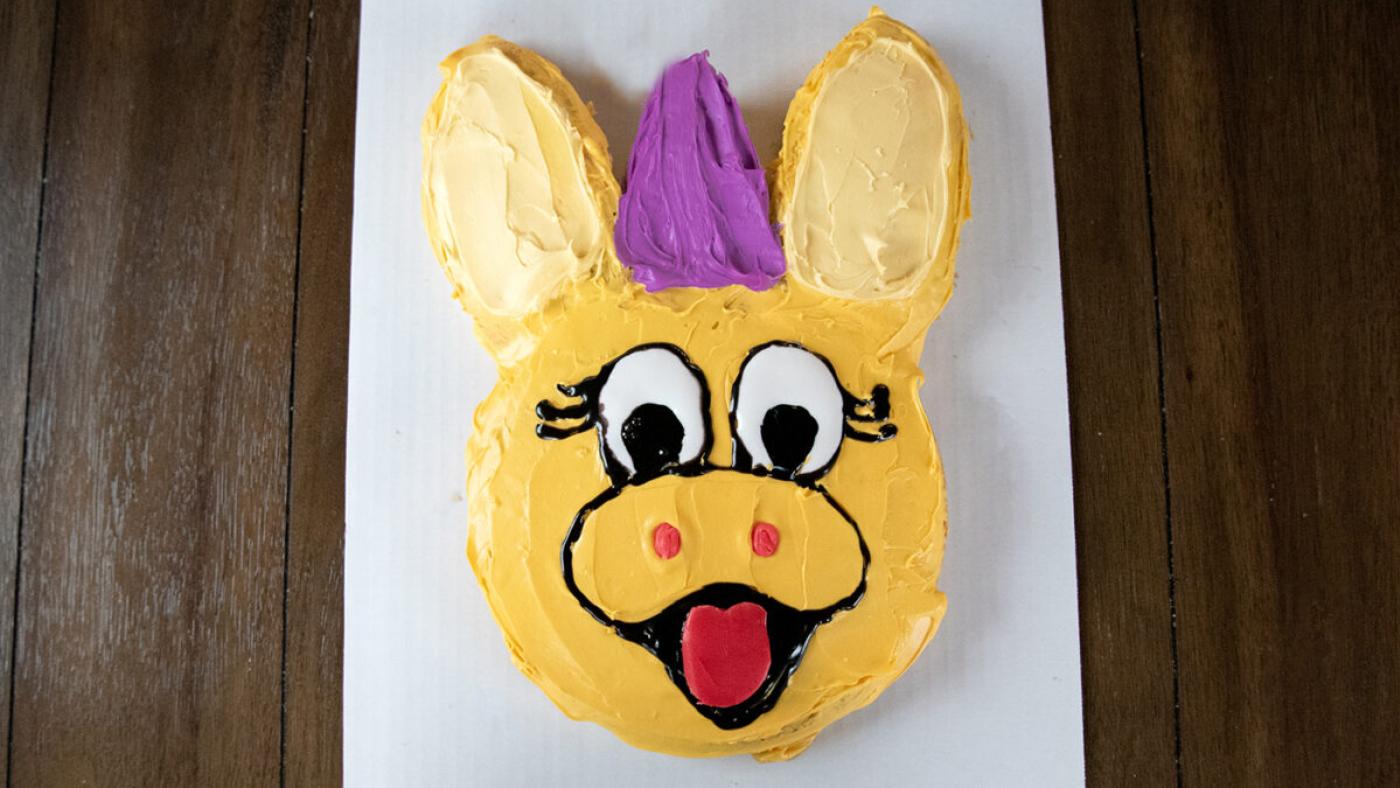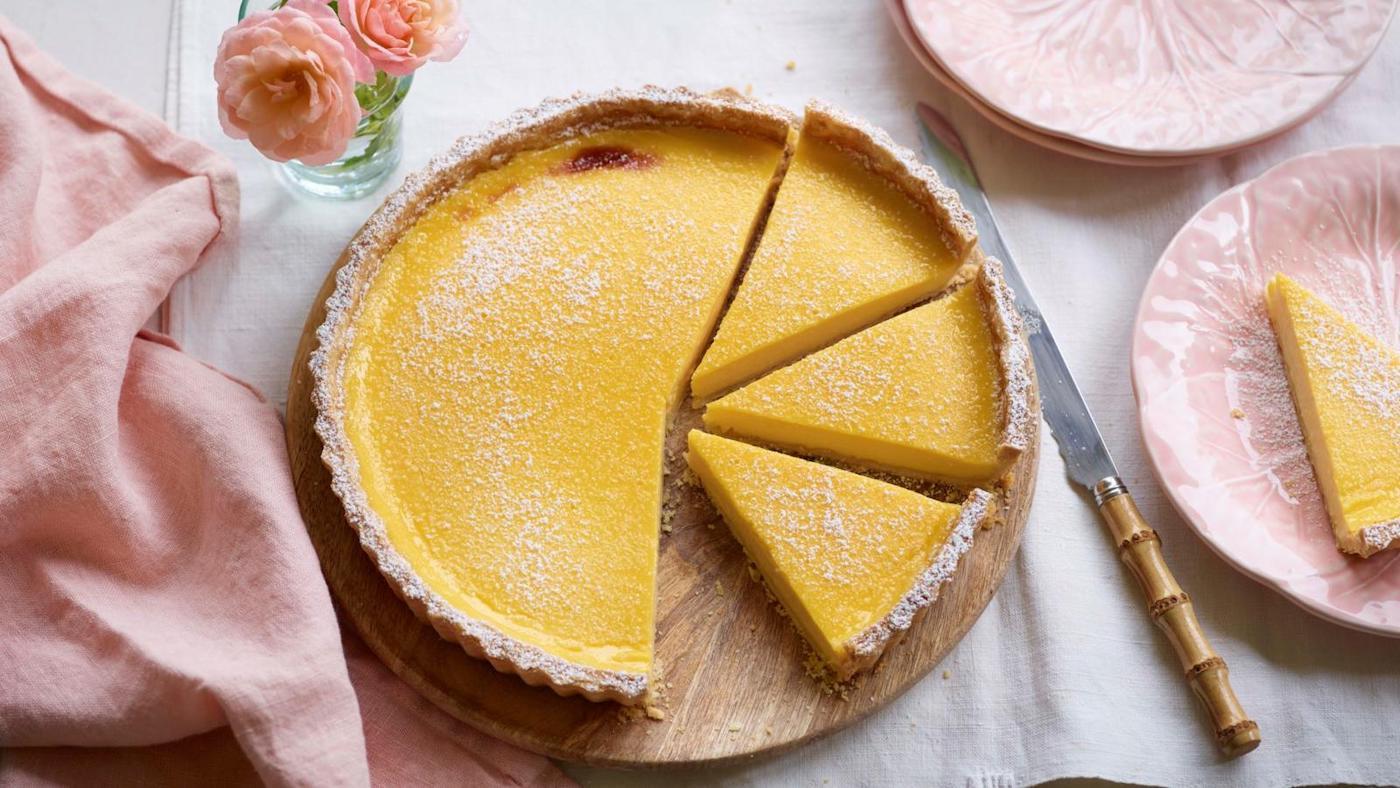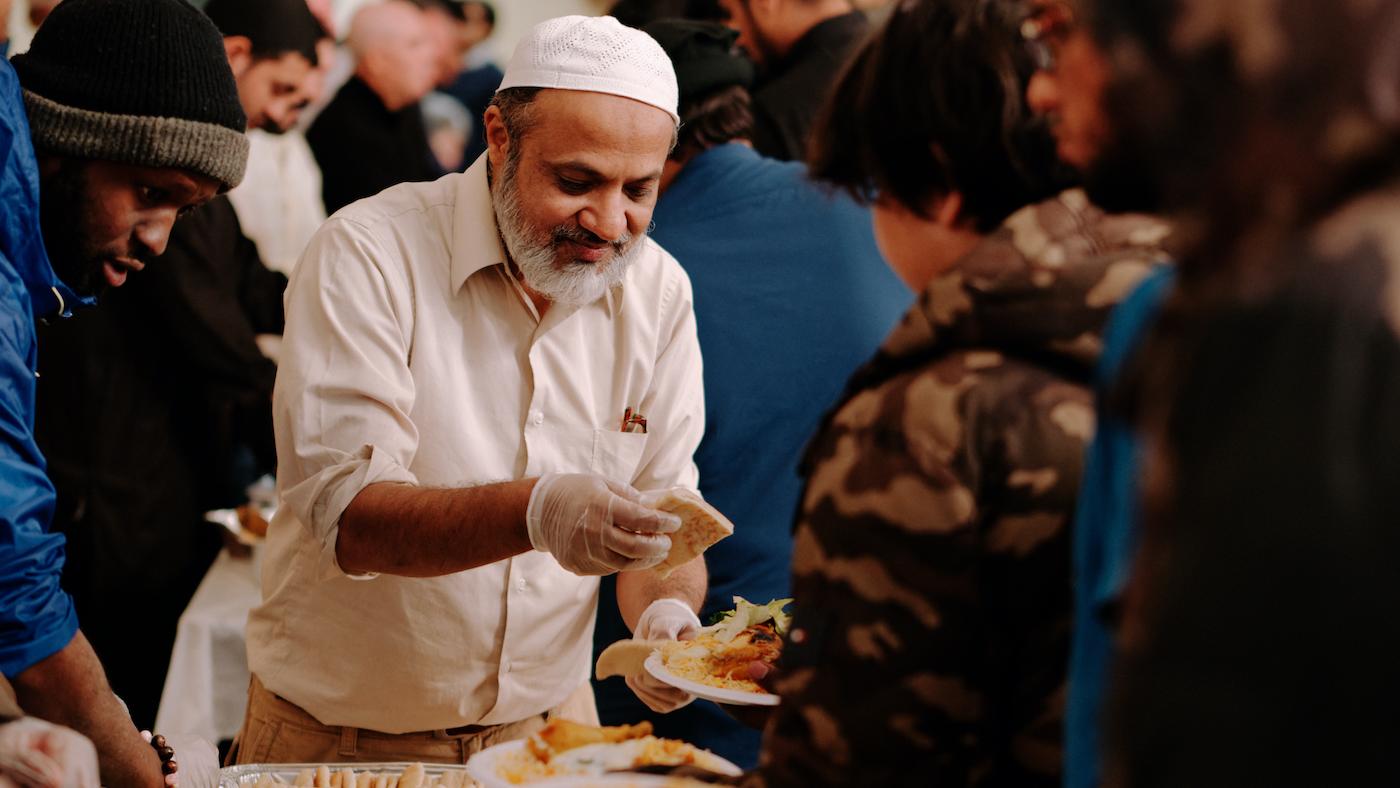Chicago's Thattu Hosts a Hands-on South Indian Feast Celebrating the Harvest
Daniel Hautzinger
August 24, 2023

Get more recipes, food news, and stories by signing up for our Deep Dish newsletter.
The legendary King Mahabali can only come back to earth once a year, so there better be a blowout party to celebrate his brief return. In the southern Indian state of Kerala, families stay up all night making pookalam—flower blossoms arranged into elaborate patterned carpets. They then reward their labor with a vegetarian feast of around fifteen courses, all eaten by hand from a banana leaf, in celebration of Mahabali’s return and the harvest.
This is the festival known as Onam, which takes place around the end of August or beginning of September. The feast is called sadya, which is also held for weddings or other large celebrations. Both are little-known in Chicago, but the Keralite-focussed restaurant Thattu has offered an Onam sadya for several years now. The upcoming one, taking place August 26-28, is the first in their own brick-and-mortar restaurant, which opened in Avondale in April.
“It’s truly the harvest festival,” says Vinod Kalathil, who co-owns Thattu with his wife, chef Margaret Pak. “That’s when the rice is harvested. It’s one of the reasons the sadya is vegetarian and it’s very produce-based. You actually don’t even find a lot of spices.” The bounty of the land and the harvest is allowed to take the spotlight in dishes like avial, which features vegetables in lightly spiced coconut and yogurt; the mashed squash and roasted coconut dish erissery; pachadi, spiced pineapple cooked in yogurt; and olan, a mixture of winter melon and black-eyed peas in coconut milk.
As is probably clear, coconut is a defining element of Keralite cuisine. “We use a lot of coconut in everything, and [the cuisine] is very tropical in nature, whilst North Indian food is very dairy-based,” Kalathil says. “The only time we use dairy is yogurt, and sometimes a little bit of ghee.”
Whereas many people associate South India with vegetarian food, Kerala actually has one of the lowest rates of vegetarianism in India, due to its cosmopolitan nature, mixture of religions, and history of Western trade and colonization. “I grew up eating beef and pork and duck and a lot of seafood,” says Kalathil, who is from the city of Kozhikode. “We have a lot of Portuguese and Arabic influence.”
That influence is in large part because of the spice trade. Kerala is located on India’s Malabar Coast, which is known as the “Spice Garden of India.” Black pepper, which is now the world’s most traded spice and was once valuable enough to be a form of money, is native to there, and cardamom, cinnamon, and nutmeg are abundant. A popular type of cookie known as a khara biscuit features a bazaar’s worth of spices, and was one of the delicacies that piqued Pak’s interest in the food of her husband’s homeland. Her version, developed before she and Kalathil first opened Thattu in 2019 as a stall at the short-lived food hall Politan Row, is still on the regular menu as a “masala biscuit.”
Other Keralite items that have remained from those early days are the black chickpea kadala curry and the pillowy coconut and fermented rice crepe appam. But over their pandemic years as a pop-up and now in their permanent home, Pak and Kalathil have expanded the menu to include bigger items such as fish steamed in banana leaves and malabar chicken biryani, as well as some inventive applications of Keralite flavors, as in the lunchtime-only fried chicken sandwich and the bone-in pork chop peralan.
“We do put our own touch on it,” says Kalathil. Pork peralan is “a very specific Christian dish,” but at Thattu its sauce dresses a whole pork chop served with a yucca cake and coconut braised collard greens, which their Kansas City-raised chef de cuisine brought to the mix. “Everything has got a Keralite past to it,” he says. “It doesn’t necessarily mean that it’s traditional Keralite.”
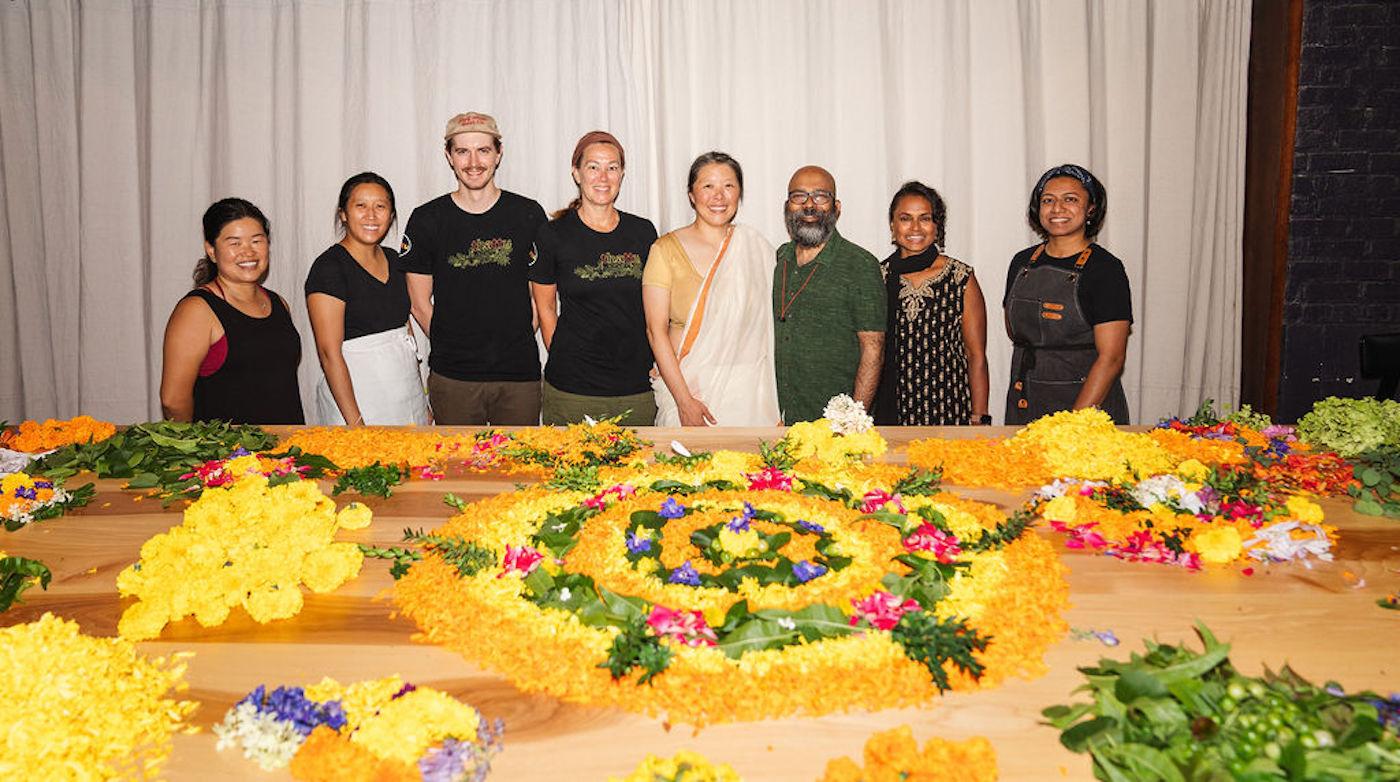 Vinod Kalathil and Margaret Pak, third and fourth from the right, want to demonstrate the diversity of Indian cuisine by showcasing the food of Kerala, as well as its traditions, such as the floral carpets known as pookalam. Photo: Kristen Mendiola, courtesy Thattu
Vinod Kalathil and Margaret Pak, third and fourth from the right, want to demonstrate the diversity of Indian cuisine by showcasing the food of Kerala, as well as its traditions, such as the floral carpets known as pookalam. Photo: Kristen Mendiola, courtesy Thattu
Pak and Kalathil were both in the corporate world before opening Thattu—he as both a computer science engineer and a CPA, she as a data analyst. She eventually sought a new path and went into food sales before working in the kitchen at Kimski in Bridgeport. She had learned some Keralite dishes from Kalathil and his mother, and won praise from her fellow cooks when she made one for family dinner at Kimski. After some pop-ups, she got the contract from Politan Row, and Kalathil quit his own corporate job to join her.
“Both of us have really no culinary background at all,” he says.
But they wanted to showcase the food of Kerala, which is relatively unknown in Chicago and the United States. “People are not aware of the diversity of Indian cuisine,” Kalathil says. “We are not going to have naans, we are not going to have butter chicken on our menu.”
A “proper” sadya is even more difficult to find in this country than Keralite food, Kalathil says, explaining that even people who make it at home typically use paper banana leaves as their plate, because real ones are hard to come by. “We found a place that actually flies them in from India,” he says. They also have pookalam, and allow guests to participate in making the flower carpets.
When they host a sadya, he and Pak demonstrate to customers how to eat all the dishes, including a unique type of rice and the saucy sambar—a lentil and vegetable dish—with their hands. (In a traditional sadya, the sambar and other soupy dishes would be served in a hollow in a pile of rice, but Thattu serves them in dishes.) “People are very, very enthusiastic about learning a little bit more about different cultures,” he says. Each guest gets an illustrated card explaining each dish, the six sides that can be added for flavor and texture, and how to eat them. He and Pak self-published a zine demonstrating the recipes of a traditional sadya that is available to purchase.
Those recipes are surprising in their mild spice and lack of meat, given the hallmarks of everyday Keralite cuisine, but an Onam sadya is a special occasion. After all, King Mahabali was an extraordinary being. He was a benevolent ruler under whose reign “no one ever went hungry, everybody was happy all the time, and it was just this utopia,” Kalathil relates. Some deities became jealous of Mahabali and asked Vishnu, the supreme Hindu deity, to intervene.
Vishnu came to Mahabali in the form of a dwarf and asked the king for “three steps of land.” Mahabali granted it. Vishnu transformed into an enormous figure and took one step that covered heaven and one that encompassed earth before asking Mahabali where to place his final step. The king offered him his own head. The footstep sent him to the netherworld, but Vishnu granted him the concession of visiting his former lands once a year during the harvest, at Onam.
“The legend of Onam is kind of a—I don’t know the best way to say it,” Kalathil says, laughing. “It’s giving a finger to the gods.”

